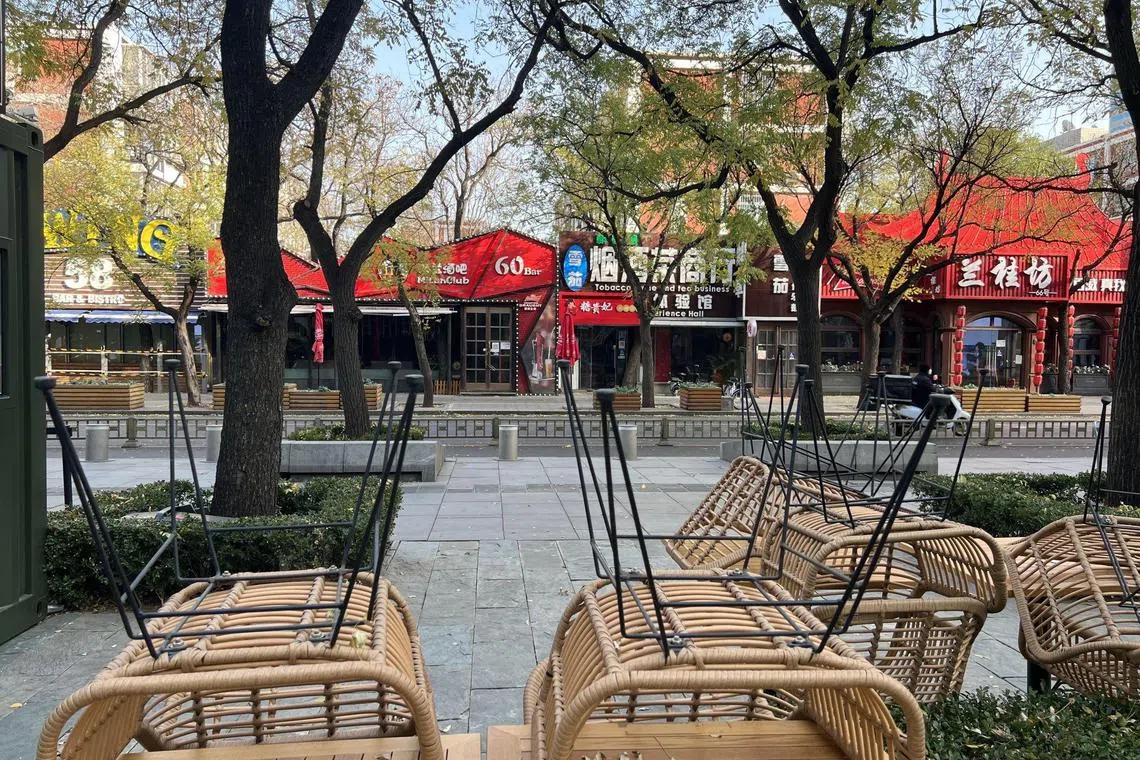Beijing reinstates dining-in, reopens gyms in widest Covid-19 easing measures yet
Sign up now: Get insights on Asia's fast-moving developments

Places with a higher concentration of people like restaurants will still require negative test results to enter.
PHOTO: BLOOMBERG
Follow topic:
BEIJING - The Chinese capital on Tuesday made its most significant – and coordinated – easing measures
In a series of announcements, the municipal government announced that those entering supermarkets, office buildings and other public areas will not have to show proof of a recent Covid-19 test. This includes entering residential compounds and villages. Some areas in the outskirts of Beijing had in recent weeks pro-actively barred visitors in a bid to prevent infections.
But places with a higher concentration of people, such as restaurants, karaoke bars, gyms and spas – along with nursing homes and kindergartens – still require negative test results for entry.
“Important units and large events, based on (their) needs, can decide on what their testing requirements will be,” according to the six-point announcement posted on the official Beijing Municipal Government website.
Shortly after, restaurants were told customers could dine-in again – which had largely been halted in most of the city in November after a spike in cases in the populous Chaoyang district.
On Tuesday, Beijing reported 1,431 new Covid-19 infections, of which 122 were community cases.
Meanwhile, subsidies and tax exemptions for certain businesses in the city will be extended, a separate announcement said, adding that a “white list” of businesses will be expanded so that certain firms can continue to operate even if there are Covid-19 control measures being enforced.
Tuesday’s new rules were far more coordinated than last weekend’s choppy instructions.
Even as people rushed for tests over the weekend so that they could return to work, the government had also shut numerous street-side testing booths and dedicated ones within housing estates, resulting in snaking queues at remaining test sites.
Overwhelmed testing companies also meant that many residents did not have their test results reflected until up to two days later.
Swabs are collected 10 to a tube before being sent to a lab for testing. Up to last week, having a contaminated sample meant that all 10 people who shared the same tube would have their entire residential block locked down while confirmation tests were conducted. This led to the rise of a phenomenon called “tube appointments”, where 10 virus-free people would get tested together, avoiding any risk of sharing a contaminated tube.
But even as free testing booths are reinstated across the city, there appears to be a subtle shift in how positive cases are being treated. While there has been no official announcement, there have been accounts of such cases being allowed to recover at home. It is a far cry from just two weeks ago when entire residential blocks were locked down and close contacts taken to centralised quarantine.
Official media have run stories of what to do in case of testing positive for Covid-19, with at least one account of a person who simply isolated at home until recovery. Some talk about the sort of medication one should have on hand to deal with the virus, while others extol the efficacy of vaccines in preventing severe illness.
When media executive Jess fell ill last weekend and a self-administered antigen test showed two dark pink lines, she immediately isolated herself.
Worried about being taken to a temporary quarantine facility, which has attracted a reputation for being crowded and unhygienic, Jess, who gave only her English name for fear of reprisal, stayed home and asked her friends to send her medication. The 25-year-old tested negative within three days.
“Fortunately, my work doesn’t require me to be in the office and I didn’t have to do a polymerase chain reaction test. Honestly, it felt like I was having a bad cold,” she said. “It’s really not the illness that is scary. It’s the thought of having to be isolated in a cold, clinical place that gives me nightmares.”


